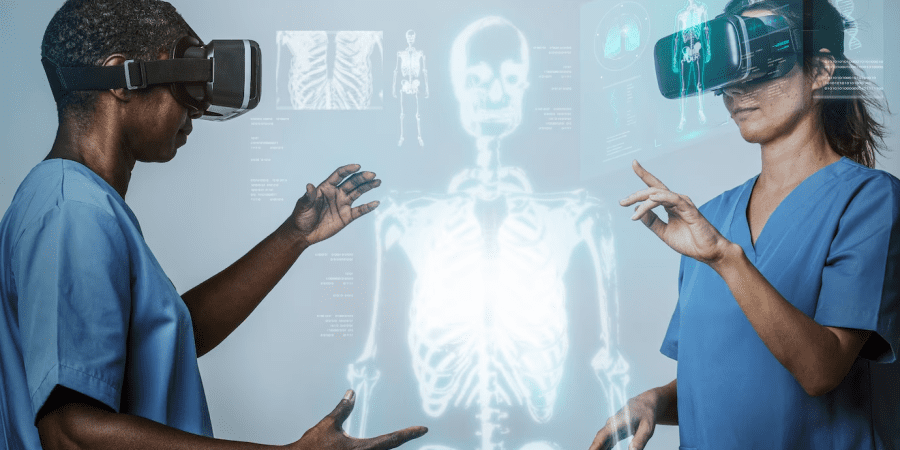How Augmented and Virtual Reality are Revolutionizing Telehealth Patient Engagement
In recent years, the integration of augmented reality (AR) and virtual reality (VR) technologies has revolutionized various industries, including healthcare. In the field of telehealth, these immersive technologies are transforming the way patients engage with healthcare providers and learn about their conditions. This blog explores the incredible potential of AR and VR in telehealth, highlighting their ability to enhance patient engagement and education.
The Power of Immersive Experiences
Augmented reality and virtual reality offer patients a new level of immersion and interaction. Through AR, patients can superimpose digital content onto their real-world environment, providing valuable visualizations and guidance. VR, on the other hand, transports patients to simulated environments, allowing them to explore and learn in a controlled and safe space. These engrossing experiences create a deeper level of engagement, enabling patients to better understand complex medical concepts and procedures.
Virtual Training and Simulation
One of the significant advantages of AR and VR in telehealth is their ability to provide virtual training and simulation for healthcare professionals. Surgeons, for example, can practice complex procedures in a realistic virtual environment, refining their skills and improving patient outcomes. Medical students can also benefit from interactive training, gaining hands-on experience without the need for physical resources. This technology-driven approach enhances education and ensures that healthcare professionals are well-prepared for real-life scenarios.
Enhanced Patient Education
AR and VR play a crucial role in patient education, enabling healthcare providers to deliver information in a more engaging and understandable manner. With AR, patients can visualize anatomical structures, medical devices, or treatment processes directly on their own bodies or surroundings. VR allows patients to experience medical scenarios, such as the progression of a disease or the effects of certain treatments. These intriguing experiences empower patients to actively participate in their own care, fostering a better understanding of their conditions and treatment options.
Overcoming Barriers to Access
Telehealth aims to provide healthcare services to individuals regardless of their geographical location. AR and VR technologies further enhance this mission by eliminating physical barriers and expanding access to specialized care. Patients in remote areas can receive expert consultations through virtual reality platforms, reducing the need for long-distance travel. Additionally, AR applications enable healthcare providers to guide patients through at-home treatments or self-care routines, bridging the gap between in-person visits and remote care.
Empowering Patient-Provider Collaboration
AR and VR foster a collaborative environment between patients and healthcare providers. Patients can share their AR or VR experiences with their doctors, enabling more accurate communication and facilitating personalized care plans. These technologies allow providers to offer real-time guidance and support, even from a distance. The engaging nature of AR and VR also helps patients feel more involved in their own care, fostering a stronger patient-provider relationship and improving overall outcomes.
As AR and VR continue to advance, they hold great promise for improving access to care, empowering patients, and transforming the way we experience healthcare. By embracing these technologies, we can shape a future where telehealth becomes even more engaging, informative, and inclusive. Join us and be a part of a dynamic healthcare delivery system using the latest technologies.


